Podcasts about Physics
Episodes about Physics
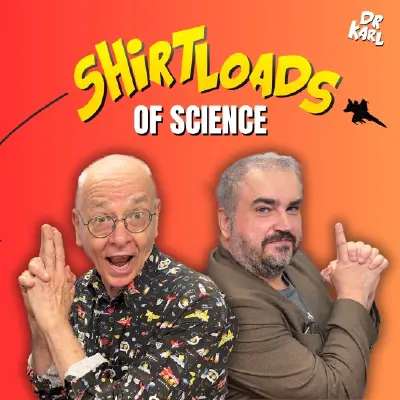
Aviation expert Dr. Graham Wild returns to take us beyond the basics of flight and into the high-speed world of subsonic vs. hypersonic aircraft. We break down the engine mechanics behind these incredible machines, and I squeeze in a humblebrag about sitting in an SR-71 (yes, okay, it was grounded). It’s a theory-packed episode, so we’ve split it into two parts. Catch Part 2 next week. Connect with Dr. Graham Wild on Linkedin Twitter/ X - @aerospacedoctor
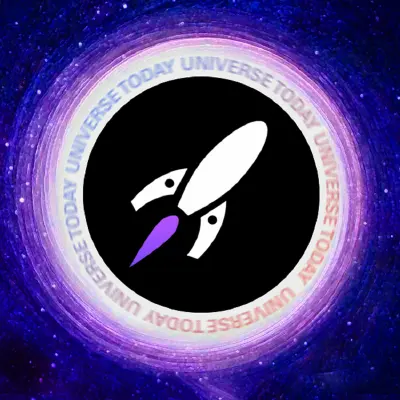
Jun 13, 2025
[Space Bites] Sun’s Pole Revealed // Sun Shade vs Climate Change // Source of Cosmic Rays
Universe Today Podcast ❭
Have we finally found the source of ultra-high energy cosmic rays? Our first look at the Sun’s south pole, New Glenn slips again, what kind of damage would rockets do to the ozone layer? And in Space Bites+, a pair of quasars that dominated Cosmic Noon.
🚀 [Space Bites+] No ADS. BONUS Story. For FREE:
https://www.patreon.com/universetoday
🌌 Zone of Avoidance interview:
https://youtu.be/BpaEskYuBk0
👉 Vote for the best story here:
https://www.youtube.com/@frasercain/community
00:00 Intro
00:23 Source of cosmic rays
https://phys.org/news/2025-06-cosmic-rays-astrophysicists-closer.html
03:25 First ever view of the Sun's pole
https://www.universetoday.com/articles/the-solar-orbiter-is-giving-us-a-decisive-look-at-the-suns-poles
05:10 Detailed view of the Sun
https://www.universetoday.com/articles/the-suns-identity-crisis-solved
06:30 New Glenn launch slips again
https://arstechnica.com/space/2025/06/second-new-glenn-launch-slips-toward-fall-as-program-leadership-departs/
08:12 Vote results
08:59 Rockets and the ozone layer
https://www.nature.com/articles/s41612-025-01098-6
11:10 Sunshade to combat climate change
https://www.universetoday.com/articles/would-a-planetary-sunshade-help-cool-the-planet-this-mission-could-find-out
13:01 Star formation in the center of the Milky Way
https://www.universetoday.com/articles/the-galactic-center-struggles-to-form-massive-stars
14:46 Colliding Galaxies
https://www.universetoday.com/articles/colliding-galaxies-tearing-at-each-other-with-gravity-and-radiation
15:45 A planet forming
https://www.universetoday.com/articles/youre-looking-at-a-newly-forming-planet
17:12 More space news
18:09 Bonus story
18:26 NASA's SMM
📺 VIDEO VERSION
https://youtu.be/_8EZb6NOauo
📰 GUIDE TO SPACE Newsletter
No ads. Subscribe for FREE: https://universetoday.com/newsletter
🎧 PODCASTS
Universe Today: https://universetoday.fireside.fm/
Astronomy Cast: http://www.astronomycast.com/
📩 CONTACT FRASER
frasercain@gmail.com
⚖️ LICENSE
Creative Commons Attribution 4.0 International (CC BY 4.0)
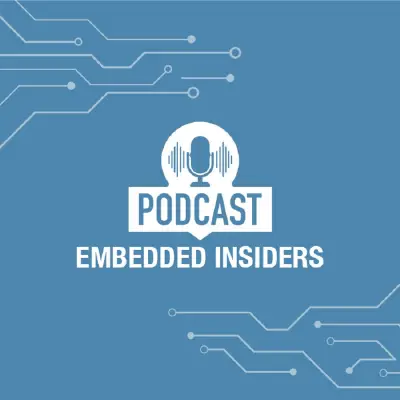
Send us a textIn this episode of Embedded Insiders, we’re joined by RISC-V’s newest CEO, Andrea Gallo, who outlines his vision for the company’s future. From accelerating ecosystem growth to his expectations for current architectures, Gallo shares his strategy to shape the next chapter of RISC-V.Later, Rich and Vin return with another Dev Talk, featuring Avijit Sinha, Senior VP of Strategy and Global Business Development at Wind River. They explore how AI is revolutionizing computing platforms and offer insights on starting your own AI project.But first, Rich, Ken, and I dive into the evolving landscape of AI-powered search tools and their impact on journalism and media.For more information, visit embeddedcomputing.com

Jun 12, 2025
Fruitful Disagreement in an Age of Division with Robert George and Cornel WestRobert George and Cornel West
The Origins Podcast with Lawrence Krauss ❭
One of the great pleasures of hosting the Origins Podcast is talking with fascinating thinkers who challenge my perspectives and with whom I can have frank, if provocative, discussions. My recent conversation with Robert George and Cornel West was particularly enjoyable. These two distinguished intellectuals embody the spirit of respectful and meaningful dialogue that the Origins Project Foundation aims to foster. Robert George is a renowned conservative legal scholar and Catholic professor at Princeton University, while Cornel West is a leading progressive philosopher and Protestant scholar at Union Theological Seminary, and an academic celebrity. Together, they've authored a timely new book, Truth Matters, exploring how fruitful dialogue can bridge ideological divides even during polarized times.In our conversation, we tackled subjects including philosophy, theology, politics, and the crucial role respectful disagreement plays in uncovering deeper truths. Joining the discussion as a scientist, atheist, and someone raised in a Jewish tradition, I brought a viewpoint to our exchange that differed from those of both Robert and Cornell, who in spite of their political differences are both Christians, and scholars in the humanities . It was especially rewarding to find common ground with Robert and Cornel despite our differing starting points. All told, I found it one of the most fascinating discussions to date, and the first with more than one person. It worked. :)This kind of rich and thoughtful engagement is precisely what inspired me to start the Origins Podcast. Robert George and Cornel West remind us that disagreements are valuable, as they help us move closer to understanding not only each other, but also ourselves.As always, an ad-free video version of this podcast is also available to paid Critical Mass subscribers. Your subscriptions support the non-profit Origins Project Foundation, which produces the podcast. The audio version is available free on the Critical Mass site and on all podcast sites, and the video version will also be available on the Origins Project YouTube. Get full access to Critical Mass at lawrencekrauss.substack.com/subscribe

Jun 09, 2025
Unpacking Heat Pump Finance: The BUS Consultation & Third-Party Solutions
BetaTalk - The Renewable Energy and Low Carbon Heating Podcast ❭
Send us a textJoin Nathan's guests David & Rob from Fornax and dive into the nitty-gritty of the Boiler Upgrade Scheme (BUS) consultation and explore how third-party finance could be the key to unlocking widespread domestic heat pump adoption. We'll break down the "finance gap challenge," look at what makes third-party ownership work, and dissect the pros and cons of different financing models.In this episode, we discuss:The Finance Gap Challenge: Why current BUS grants alone aren't enough for mass market adoption and how existing loan products fall short for consumers and installers.The Power of Third-Party Ownership: How it dramatically increases heat pump installations by offering: Superior consumer protection: If the system fails, customers stop paying, and the financer is responsible for resolution.Risk alignment: Financiers are incentivized to ensure proper installation and ongoing performance.Better affordability and accessibility: Eliminates large upfront capital requirements.Support for installer businesses: Creates sustainable, predictable maintenance income.What Works: Consumer Hire vs. What Doesn't:Consumer Hire agreements: The only commercially viable third-party ownership model under UK regulation. Subject to robust FCA Consumer Duty protections—not "lightly regulated."Consumers have clear and simple mechanisms to keep their system; providers don't want them back!Why Hire Purchase models are problematic: Despite being highlighted in the consultation, they remain commercially unworkable due to existing financial regulations.Consumer Protection Reality Check:Consumer preference surveys don't equal deliverable products—regulatory constraints matter.Consumer protection isn't free: Every additional measure either limits access to affordable heat pumps or makes them more expensive/unworkable. Duplicative measures unfairly penalize consumers.Repossession rights are fundamental to risk pricing; removing them increases costs for all consumers (e.g., mortgages).Maximum term limits would reduce affordability and increase financial exclusion.Many proposed duplicative requirements (e.g., Ofgem doing things the FCA already does) deter small businesses and hinder independent installers.Innovation vs. Prescription Risk:Over-prescription risks stifling innovation just as the market gains momentum.Standard contract requirements could recreate past failures like the Green Deal/Green Homes Grant.THIS SEASON IS BEING SPONSORED BY INTERGAS Support the showLearn more about heat pump heating by followingNathan on Linkedin, Twitter and BlueSky

Jun 09, 2025
317 | Nicole Rust on Why Neuroscience Hasn't Solved Brain Disorders
Sean Carroll's Mindscape: Science, Society, Philosophy, Culture, Arts, and Ideas ❭
The human brain is extremely complicated, but decades of careful neuroscientific research have revealed quite a bit about how it works, including how certain genes affect particular brain behaviors. Nevertheless, this progress has not led to quite as much improvement in the treatment of brain disorders as we might expect. I talk with neuroscientist Nicole Rust about why this is and how to improve the situation, as discussed in her new book Elusive Cures.Blog post with transcript: https://www.preposterousuniverse.com/podcast/2025/06/09/317-nicole-rust-on-why-neuroscience-hasnt-solved-brain-disorders/Support Mindscape on Patreon.Nicole C. Rust received her Ph.D. in neuroscience from New York University. She is currently a professor of psychology at the University of Pennsylvania. She is also a contributing editor at The Transmitter and an editor at BrainFacts.org. Among her awards are the Troland Research Award from the National Academy of Sciences.Web siteUPenn web pageGoogle Scholar publicationsWikipediaBlueskySee Privacy Policy at https://art19.com/privacy and California Privacy Notice at https://art19.com/privacy#do-not-sell-my-info.

Jun 09, 2025
Spotlight: Today’s Federal Policies Shape Tomorrow’s Photonics Landscape with Rep. Joe Morelle
All Things Photonics ❭
A group of bipartisan lawmakers formed the Optics and Photonics Caucus back in 2020. At that time, the U.S., along with the rest of the world, was grappling with the pandemic and the disruptions to the supply chain it created. The legislators on that committee hoped to use this new platform to address America’s reliance on Eastern nations and boost the domestic production of photonic goods.
Democratic Rep. Joe Morelle of New York is the co-chair of the Optics and Photonics Caucus. In this Spotlight conversation, Morelle offers his insight on the policies impacting our industry and shares the concerns of New York’s leading photonics companies.
Spotlight from "All Things Photonics"® is a special series of intimate sit-down conversations with preeminent figures in our industry.
Sponsored by:
Hamamatsu – www.Hamamatsu.com
Editor’s Note: The team at "All Things Photonics" reached out to Morelle’s Republican counterpart, Rep. Brian Mast of Florida, to take part in the conversation. Mast and his team did not follow up with us for this podcast.

Jun 06, 2025
EP221 Consultative Selling Meets Smart Software in Home Performance with Amanda Godward (May 2025)
Building HVAC Science ❭
“Proposals don’t save energy… action does.” — Bill Spohn “I didn’t know how cool this thing was until we started sharing it with the world.” — Amanda Godward “Change is hard—but that’s what makes it great.” — Amanda quoting Ross Trethewey from This Old House In this episode of Building HVAC Science, hosts Bill Spohn and Eric Kaiser welcome Amanda Godward, founder of Ecotelligent Homes and Ecotelligent Software. Amanda shares her journey from mechanical engineer in the auto industry to a passionate home performance contractor and software developer. Her Excel-based audit tool, born from a need to streamline customer reports and drive action, eventually evolved into a full-blown mobile and desktop app that’s now saving contractors hours per appointment. Ecotelligence Software is designed by a contractor for contractors. It supports fast, accurate energy audits and work orders, including customizable good-better-best proposals, automated workflows, and rich documentation via mobile-friendly tools. Amanda highlights how her engineering background helped her embed best practices, consistency, and compliance into the platform, resulting in better customer outcomes and more efficient field operations. From audit to install, Amanda’s thoughtful approach and personal joy in helping others shines through. The conversation underscores the value of consultative selling, real-time proposals, and how the right tool can empower contractors to fix more homes faster—all while delighting customers and installation crews alike. Amanda is offering discount code: BSHVAC to get half off your first month of service with Ecotelligent, this code expires June 30, 2025. Ecotelligent software: https://ecotelligentsoftware.com/ Amanda’s LinkedIn: https://www.linkedin.com/in/amanda-godward-28898b9/ Amanda’s email: amanda@ecotelligentsoftware.com Amanda’s home performance business: https://www.ecotelligenthomes.com/ This episode was recorded in May 2025.
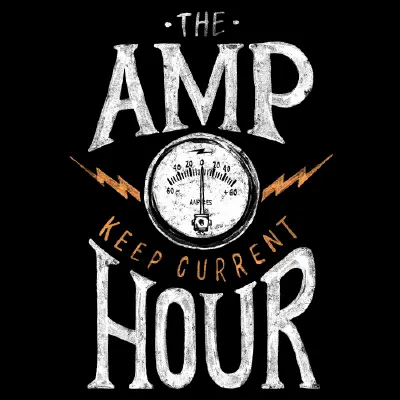
Jun 04, 2025
#695 – Making The Invisible, Visible with Sam Aldhaher
The Amp Hour Electronics Podcast ❭
Sam Aldhaher is a power engineer and 3D graphic artist, his Blender visualizations have helped many people understand how RF flows in a variety of circuits. Sam joins Chris to talk about how to get started in Blender and the variety of tools available once you do.
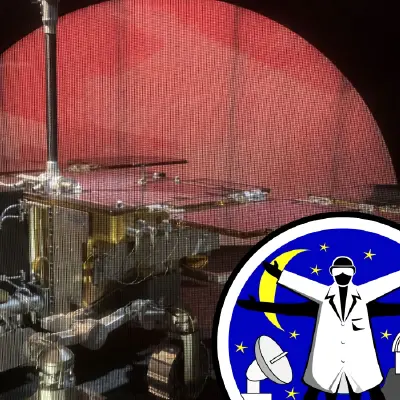
May 29, 2025
Factories in space, ET, and a space paraglider
Naked Astronomy, from the Naked Scientists ❭
Could factories in space be the future of manufacturing? Space Boffins Sue Nelson and Richard Hollingham meet the head of the UK company, Space Forge, about to launch a (very small) factory into orbit. Sue also visits a new exhibition at the Natural History Museum in London exploring whether life could exist elsewhere in the universe, and the weird 1960s design that could have seen astronauts return to Earth on a paraglider... Like this podcast? Please help us by supporting the Naked Scientists

